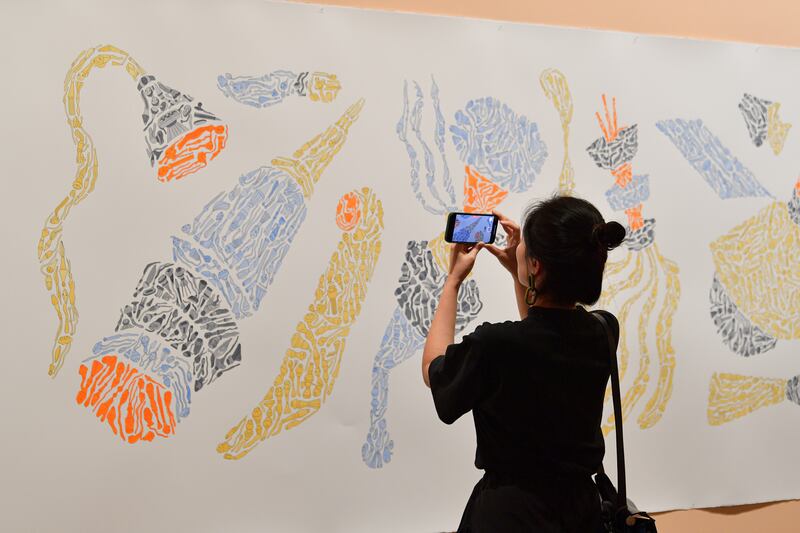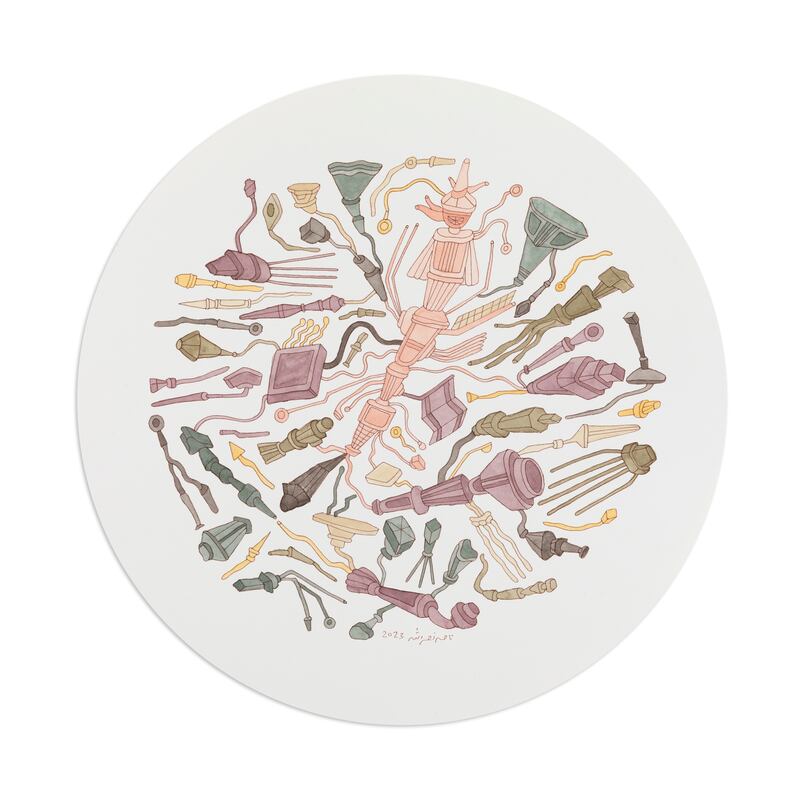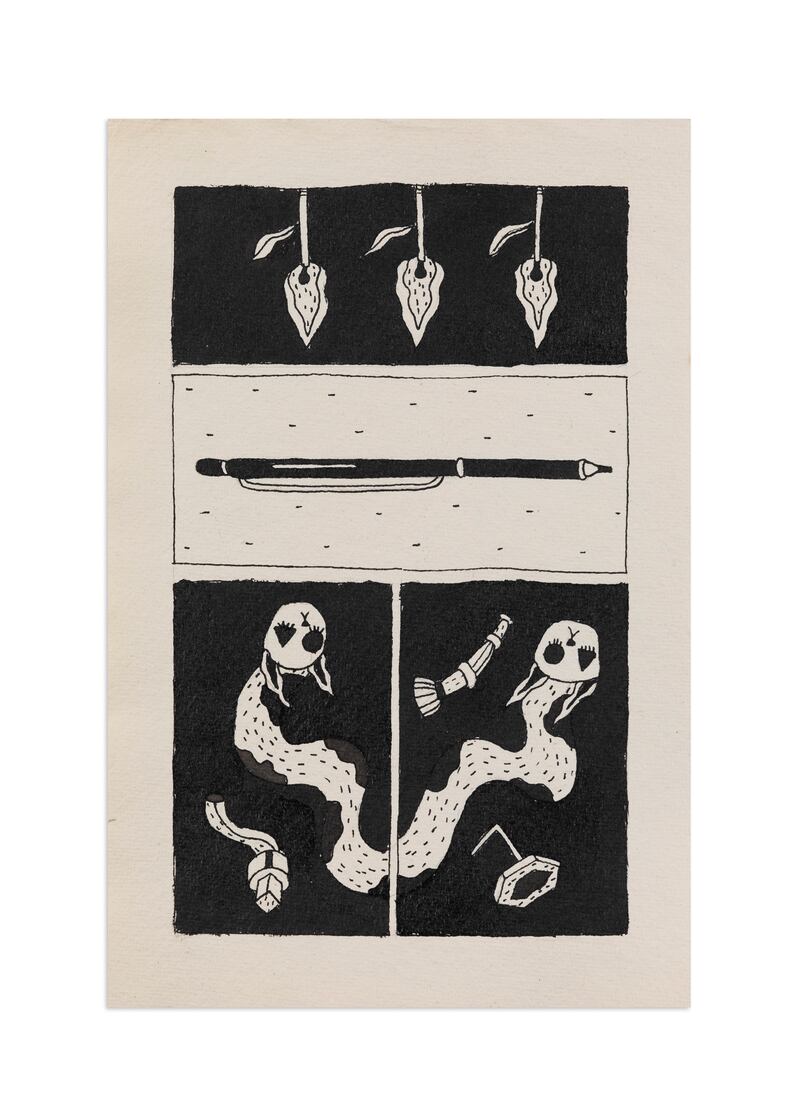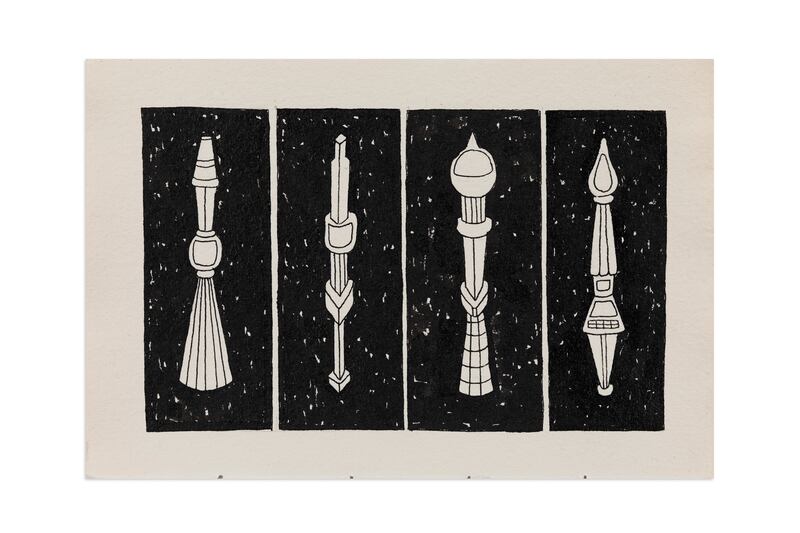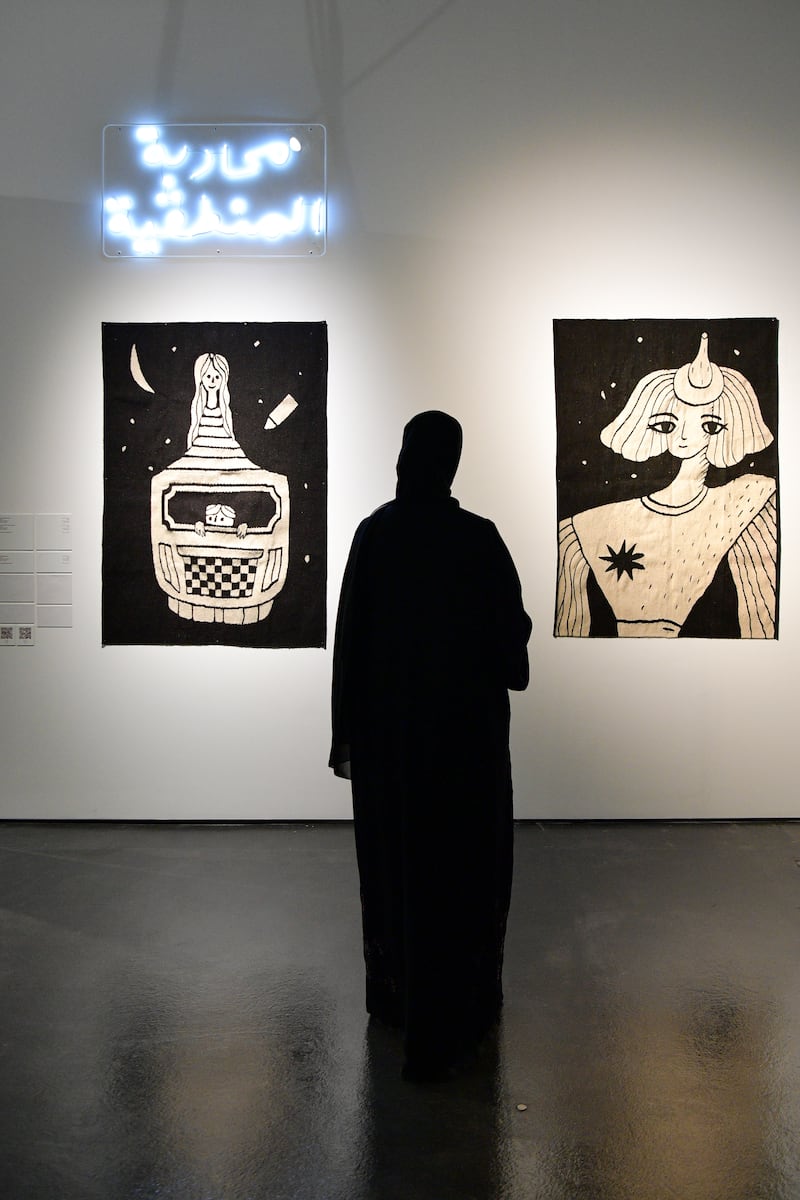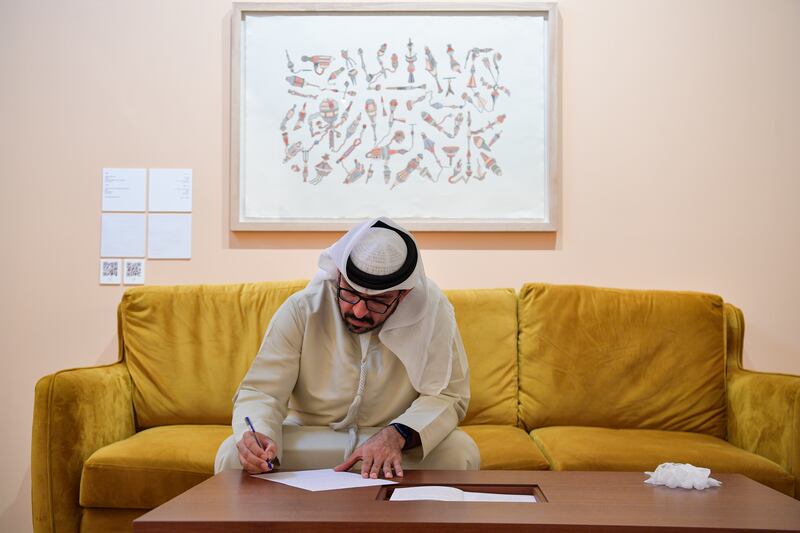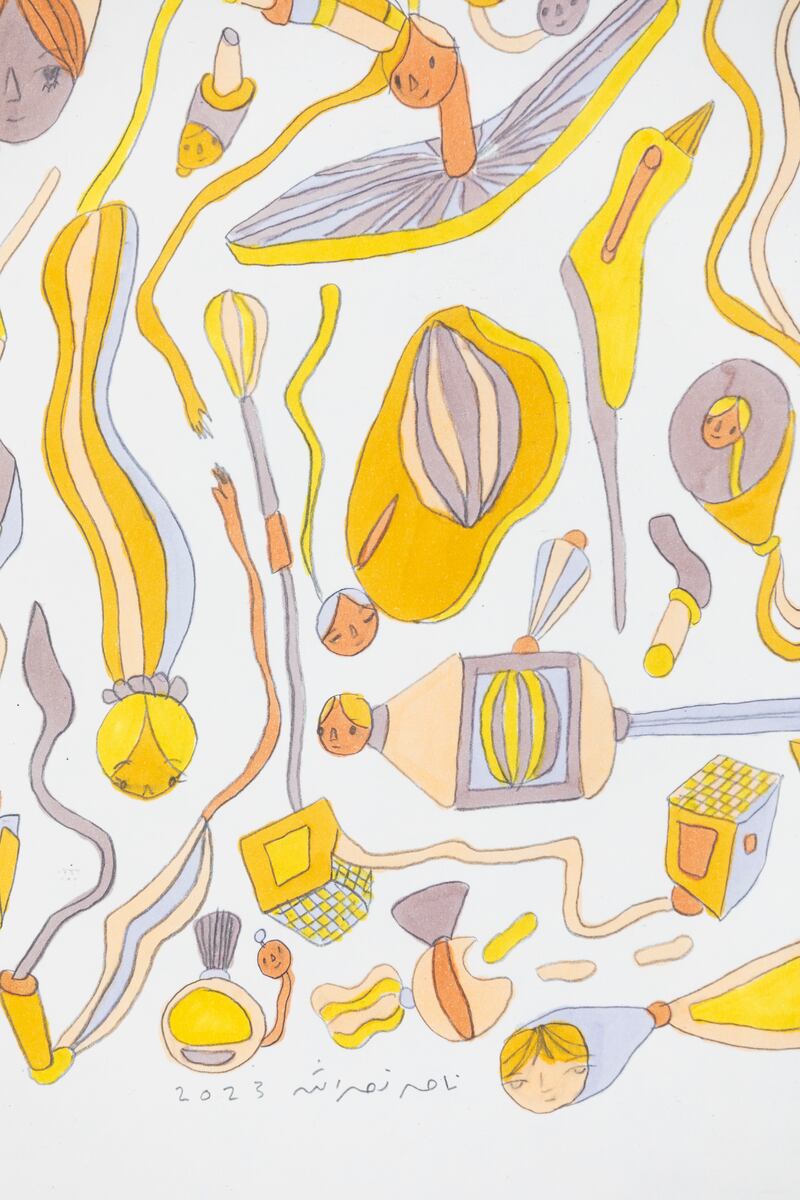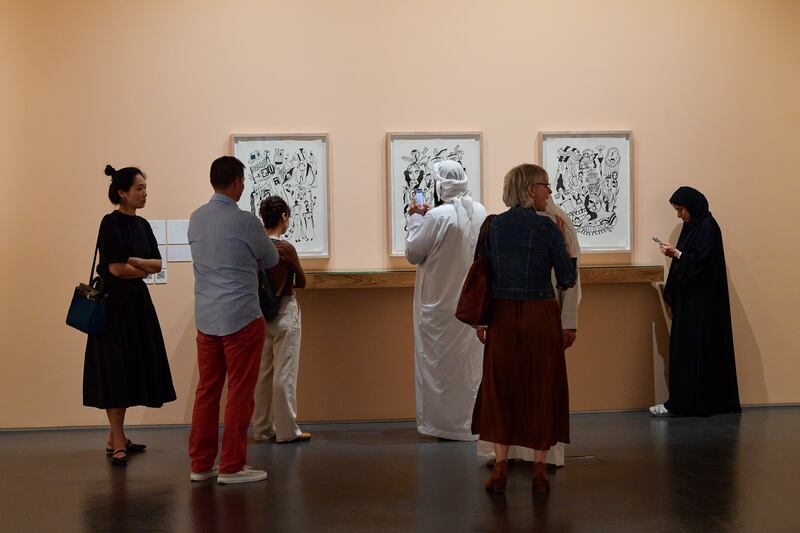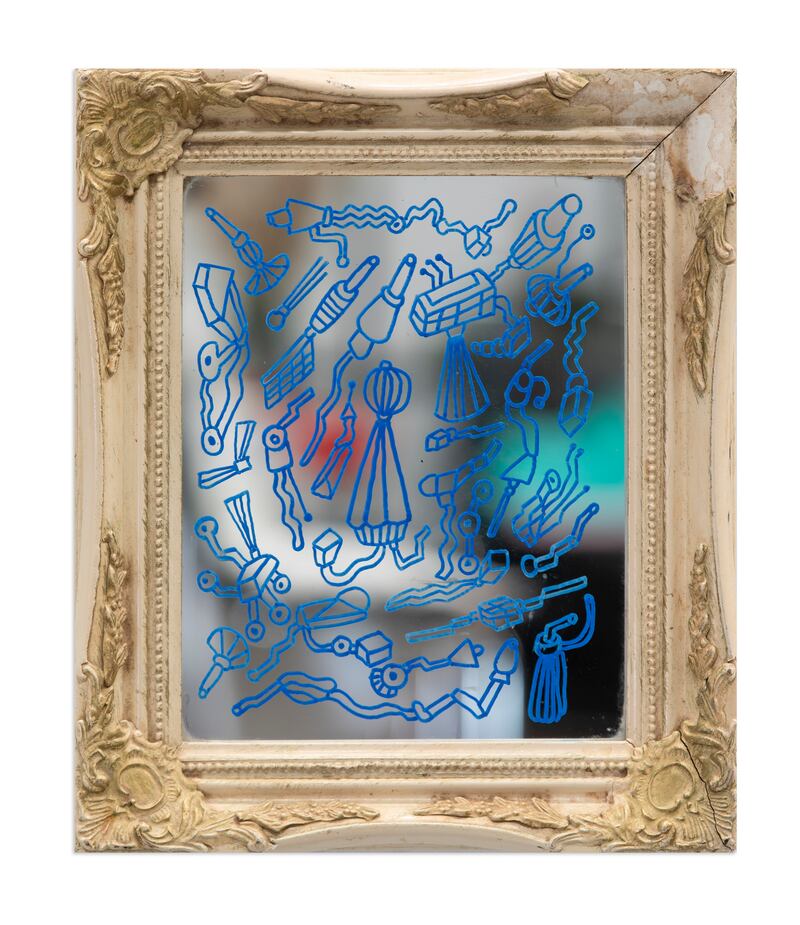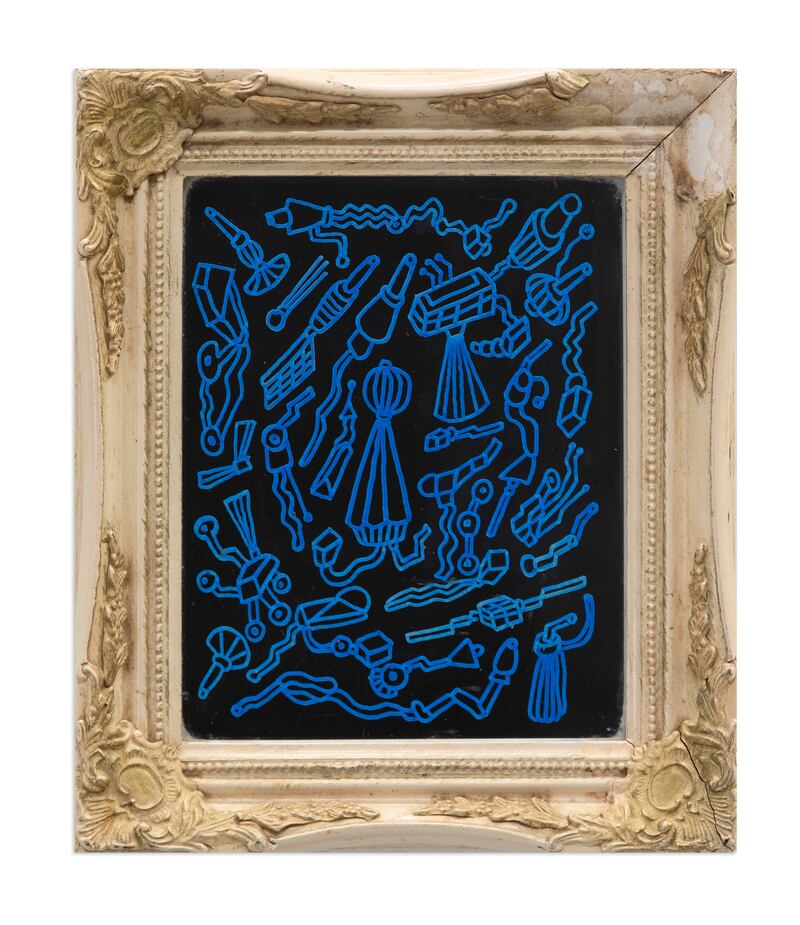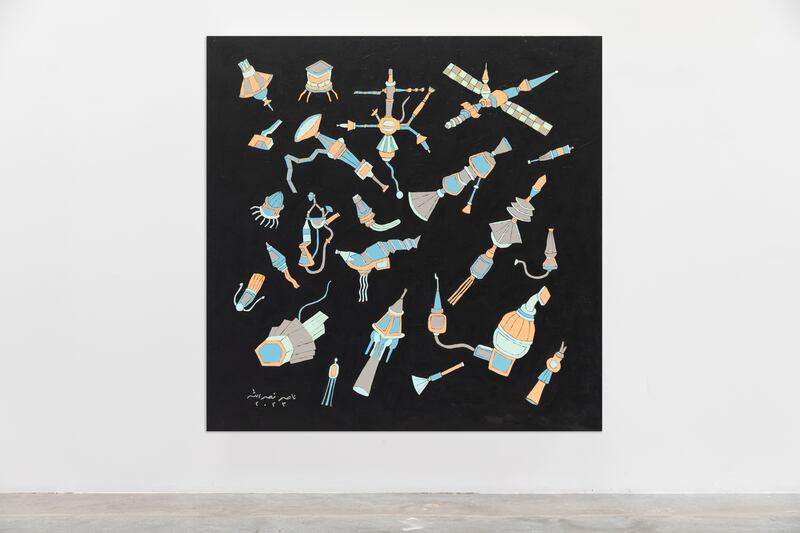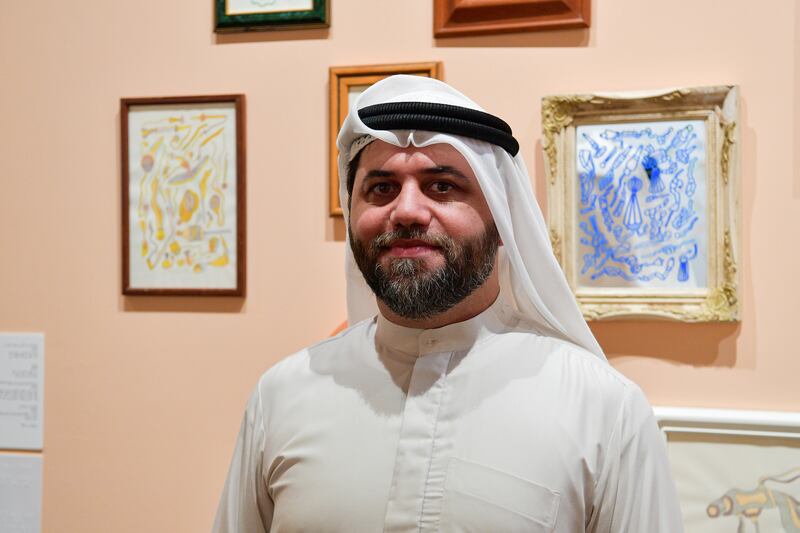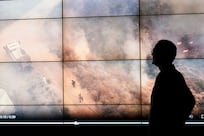In a solo exhibition at 421, Nasir Nasrallah whimsically rouses machines with the stuff of life, using mirrors, textiles, texts and drawings to invite an alternate viewpoint of technology.
Poetic of Machines is not a dystopian envisioning of a world overrun by gadgets. Rather, it is a playful reimagining of the tools that populate our lives.
In circular canvases, disjointed mechanical parts swirl with cellular grace, as if seen through a microscope. Elsewhere, through sprawling textile works, satellites look back beaming with childlike eyes.
Images of crankshafts and suction pumps are painted on framed, reflective surfaces. Handwritten pages are pinned to the wall, logging conversations between man and machine.
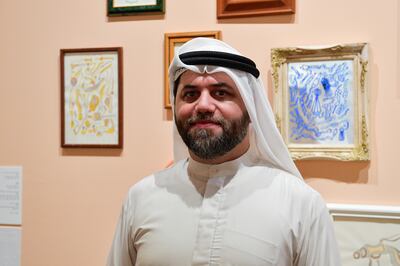
“The idea of giving gadgets and machines personalities came from wanting to let people see and relate to technology in a new and interesting way,” Nasrallah says. “Instead of just seeing them as regular tools, I wanted to show that these devices have their own unique qualities and behaviours, kind of like people do.”
Poetic of Machines is running at 421, formerly Warehouse421, until September 24. The exhibition is a product of the 421 Artistic Development Programme, in which emerging creatives living in the UAE receive guidance on how to develop their practice. They are also given the space to experiment and produce work.
"The programme provided me with mentorship and feedback that supported the development of this body of work," Nasrallah says. "It was also a great opportunity to install a large-scale solo exhibition in a major public space and see how my project can take a life of its own through the physical presentation."
While taking part in the programme, Nasrallah became keen to examining the rapport between humans and technology.
This relationship has been a lifelong interest to him, analogous to the bond he had with his late grandfather, Mohammed Nasrallah Alzarooni, to whom the exhibition is dedicated to.
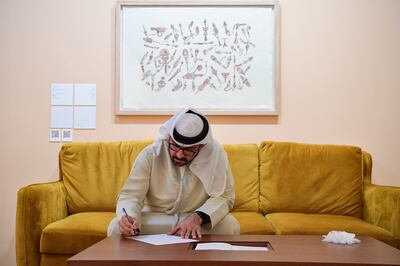
“My relationship with my late grandfather was truly special and deeply influential in shaping my artistic journey,” he says.
As a child, Nasrallah would often spend time in his grandfather’s antique shop in Sharjah. Located in Souq Al Arsa, Gulf Antiques, he says, was “a place filled with treasures that carried stories of the past".
“I would often spend hours in his shop, surrounded by the aura of history and the whispers of forgotten eras,” he says. “My grandfather had an extraordinary ability to see the beauty in old and discarded objects.”
Much of Poetic of Machines aims to do the same, whether it is by giving childlike qualities to scrap metals or by reimagining a fax machine as a centerpiece to an installation.
The exhibition is replete with world-building concepts and mythology that give it its capricious flair. Nasrallah’s visual sensibilities, along the spatial dynamics within 421, make visitors feel immersed within this industrial magic realism.
But it is the research behind the works and Nasrallah’s personal history that adds depth to his light-hearted approach.
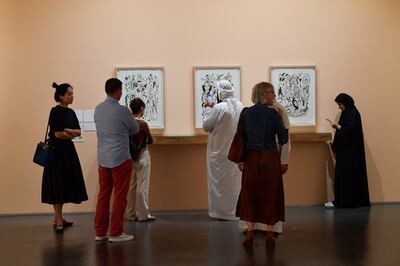
Besides finding inspiration in his grandfather, Nasrallah was also spurred by the research he did on historical figures from the region. These include Ismail Al-Jazari, a 12th century polymath with roots in in the area of Upper Mesopotamia. Al-Jazari excelled in a number of areas. He was a mathematician, artisan and mechanical engineer.
However, he is perhaps most famous for authoring The Book of Knowledge of Ingenious Mechanical Devices, in which he proposed more than 50 gadgets with instructions on how to construct them.
Among his inventions are the elephant clock, and one of the earliest water supply systems that was operated by gears and pumps. Many of his inventions featured mechanical parts that mimicked human movement. His automata were also thought to have influenced Leonardo da Vinci.
Nasrallah uses several mechanical parts in his artworks that bear resemblance to the ones conceived by Al-Jazari.
“Exploring the achievements and innovations of historical figures like Ismail Al-Jazari connects my work to a legacy of human ingenuity and creativity,” he says.
“Al-Jazari, a renowned inventor of the Islamic Golden Age, inspired me with his intricate mechanical designs and innovative ideas. His contributions to automata and engineering remind me of the timeless fascination humans have had with crafting machines.
"By referencing historical figures like Al-Jazari, I aim to bridge the gap between past and present, highlighting the continuous thread of innovation that runs through human history.”
Nasrallah also found inspiration in other scientific notions. When contemplating on how the scrapped machinery would occupy the two-dimensional space of his drawings, he decided to apply microgravity, or the appearance of weightlessness seen in astronauts or objects in space.
“By delving into the effects of microgravity on objects and organisms, I seek to capture the essence of the unknown and the unexplored,” he says.
“In essence, historical readings and research serve as a wellspring of ideas, guiding me to create artworks that resonate on intellectual, emotional and cultural levels.”
While the word "poetics" is usually employed when discussing the structure, patterns and styles within literature and poetry, Nasrallah uses the concept to signify the artistic choices that come when devising machines.
“Just as poets carefully choose words and arrange them in unique ways to create meaning and evoke emotions, the creators of these machines put thought into their design, functionality and even the way they interact with us,” Nasrallah says.
The exhibition’s title, he adds, is intended to evoke an appreciation for the creativity and thoughtfulness required when making technology, and not merely in the utilitarian sense.
“I hope the exhibition sparks curiosity about the intersection of art, science, and history. Encountering diverse mediums, narratives and concepts can encourage visitors to explore new ideas, engage in interdisciplinary thinking and embrace a spirit of continuous learning.”
